Key takeaways:
- KYC regulations are essential for preventing fraud and building trust in the crypto ecosystem, despite concerns about user privacy.
- The KYC process involves identity verification, risk assessment, and ongoing monitoring, creating a dynamic relationship between users and platforms.
- Challenges such as document discrepancies, lengthy verification times, and technical issues can complicate the KYC experience for users.
- Preparation, proactive communication, and seeking support are key strategies for a smooth KYC compliance experience.
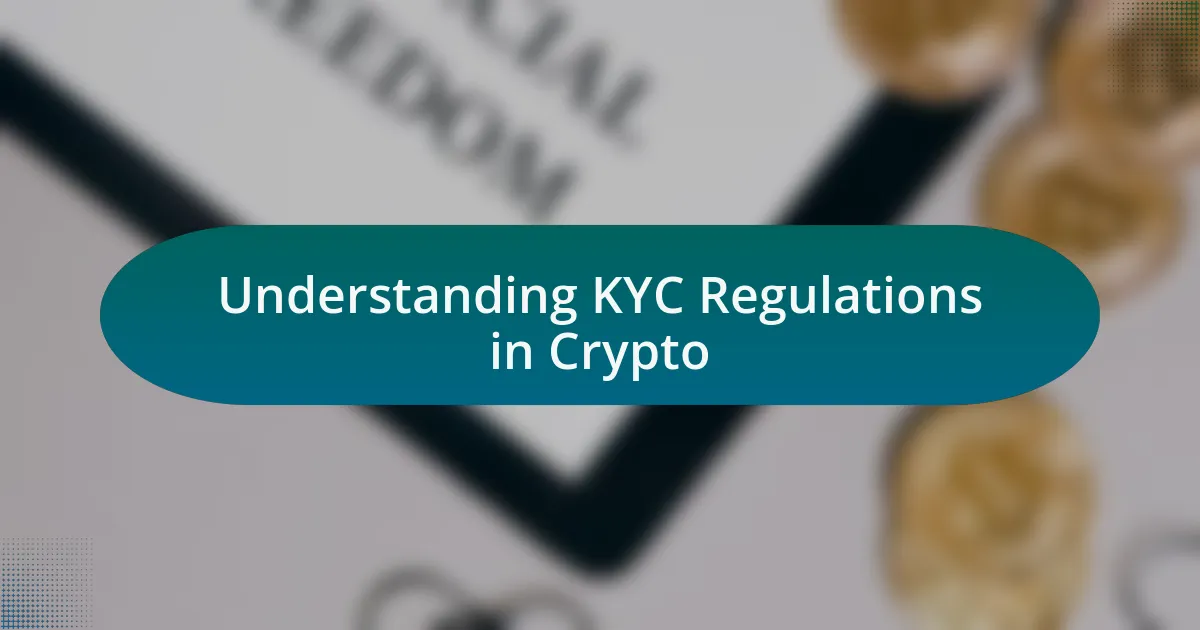
Understanding KYC Regulations in Crypto
KYC, or Know Your Customer regulations, play a crucial role in the crypto trading landscape. When I first encountered KYC, I felt a mix of curiosity and apprehension. Why do I need to share personal information to engage in what was once an anonymous space? However, the purpose of KYC is clear: it aims to prevent fraud and money laundering, ensuring that transactions are secure and trustworthy.
As I navigated through various platforms, I experienced varying degrees of KYC processes. Some required just basic identification, while others demanded extensive documentation. This variability made me wonder, how does one balance user privacy with regulatory compliance? In my opinion, striking that balance is essential for fostering a positive relationship between traders and platforms.
The emotional weight of undergoing KYC can sometimes feel burdensome, especially for those who value their anonymity. I can recall moments of frustration when waiting for verification to clear, but ultimately, I realized that these protocols are there to protect the integrity of the crypto ecosystem. Understanding KYC is not only about compliance; it’s about building trust in an industry that thrives on transformation and security.
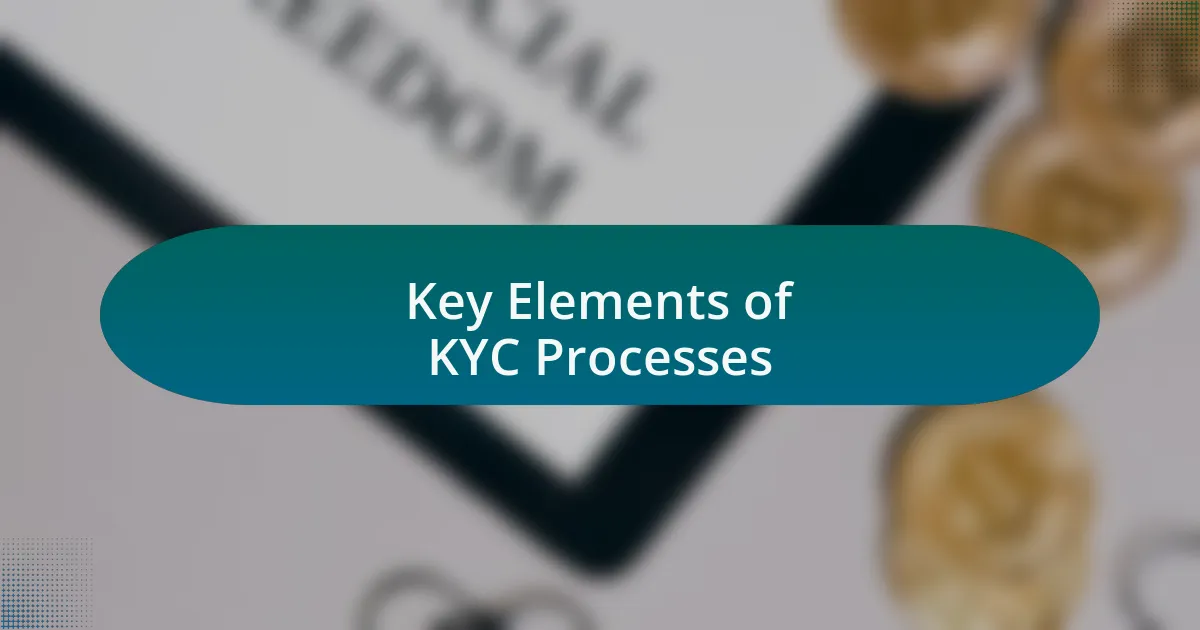
Key Elements of KYC Processes
The key elements of KYC processes involve identity verification, risk assessment, and ongoing monitoring. In my experience, identity verification often feels like a leap of faith; I had to trust that the platform would handle my data securely. I remember feeling a bit uneasy when I submitted my documents, but I knew that providing this information was a necessary step in legitimizing my trading activities.
Risk assessment is another crucial part of KYC that sometimes goes unnoticed. I’ve found that different platforms assess risk levels differently, which can lead to a wide range of customer experiences. There were moments when I pondered: are these assessments always accurate, or do they sometimes miss important nuances about users?
Ongoing monitoring truly brings the KYC process full circle. It’s not just a one-time hurdle; instead, it establishes a dynamic relationship between the user and the platform. I had an interesting moment when a platform flagged my account for unusual activity after a sizable trade I made. Initially, I felt frustrated, but then I appreciated how seriously the platform took its responsibility in protecting users from potential threats. This ongoing relationship reinforced my belief that KYC isn’t just about compliance; it’s about ensuring the long-term safety and integrity of the crypto trading environment.
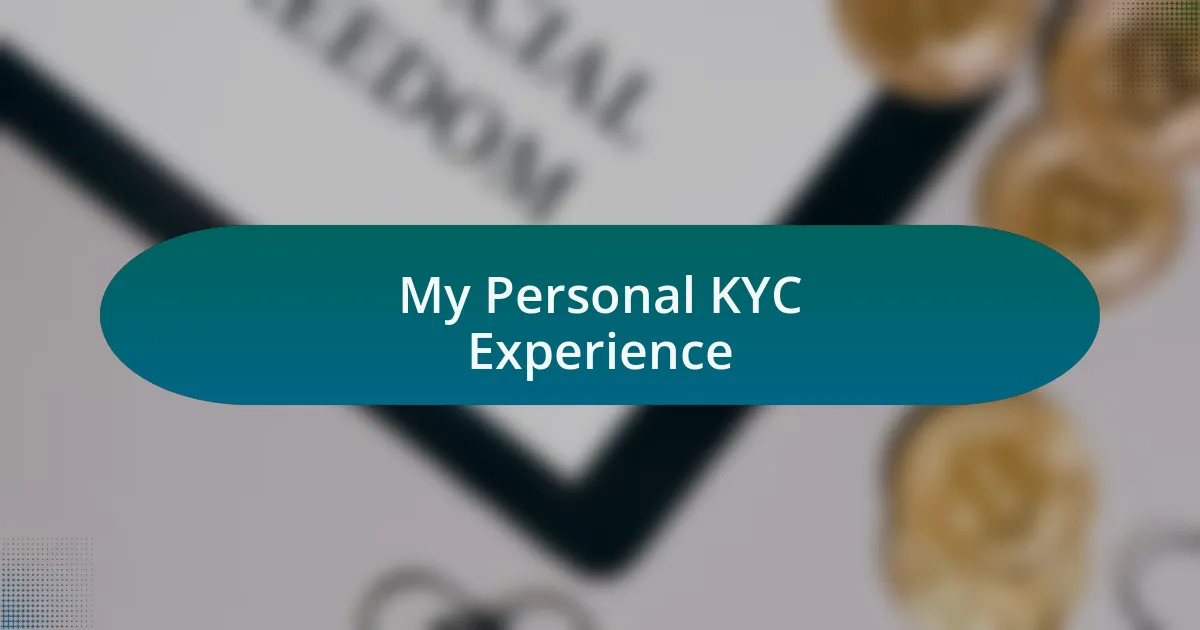
My Personal KYC Experience
Navigating the KYC process was an eye-opening experience for me. When I first encountered the requirement to submit my identification, I felt a mix of responsibility and anxiety. Would this data be protected? I think many users share that apprehension; it can feel daunting to expose personal information, especially in the relatively new and sometimes mysterious world of crypto.
The verification stage felt like a rite of passage for a crypto enthusiast. I still remember the moment I received confirmation that my documents had been accepted. It was a moment of relief, but also a reminder that trust is not just given; it has to be earned. How often do we find ourselves in situations where we have to trust platforms with information that could impact our financial futures?
Looking back, what surprised me most was how quickly I became accustomed to the ongoing monitoring aspect of KYC. Initially, I was skeptical about being constantly assessed, but then I realized it was a safeguard for us all. I even had a moment of disbelief when my trades triggered an alert that led to a brief account lockdown. It felt intrusive at first, but reflecting on that incident made me appreciate the vigilance—after all, isn’t it comforting to know that someone is watching out for potential fraud?
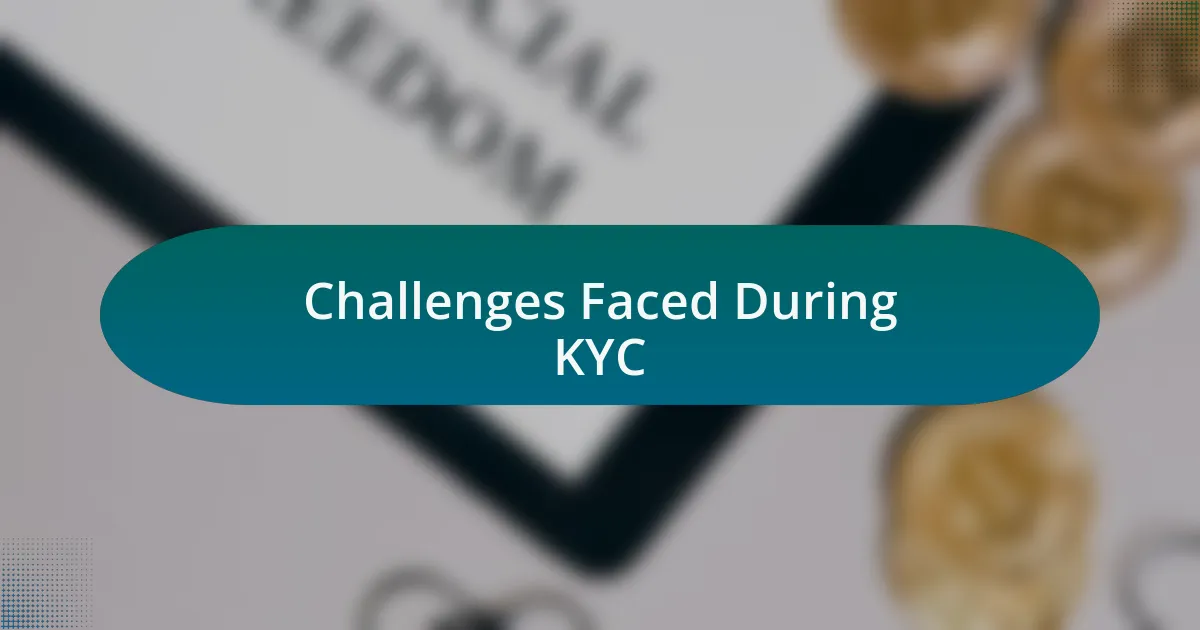
Challenges Faced During KYC
Encountering challenges during the KYC process can be quite frustrating. I vividly remember the moment when my documents were flagged for a minor discrepancy. I felt a wave of anxiety—did I make a mistake? It’s disheartening to know that a small oversight can hold up the very process that gets you into the crypto space, leaving you feeling stuck.
Another hurdle is the time it takes for verification. I experienced this firsthand when I waited days for my application to be approved. The anticipation was nerve-wracking—will I miss out on investment opportunities while my account remains inactive? It’s a common struggle for many, balancing the need for compliance with the desire for swift transactions.
Let’s not forget about the technology challenges. I recall trying to upload my ID through a clunky interface that seemed to freeze at the worst moments. How frustrating is it when technology doesn’t cooperate during such an important step? These technical issues can add layers of complexity, making the KYC process more stressful than it needs to be, especially for someone eager to dive into crypto trading.
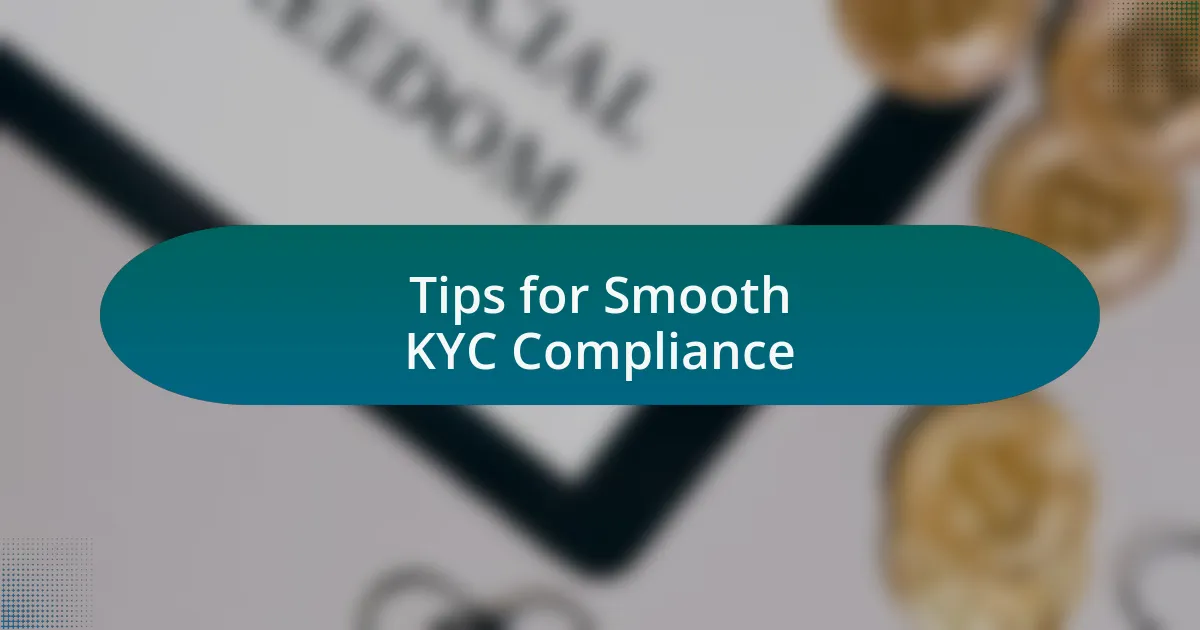
Tips for Smooth KYC Compliance
When navigating the KYC process, ensure that all your documents are in order before submission. I learned this the hard way after my initial application was delayed because I sent an outdated utility bill. It made me think—what if I had double-checked first? This small step can save you time and stress, bringing you one step closer to enjoying the benefits of crypto trading.
Another vital tip is to keep an eye on communication from the platform. I can’t tell you how many times I missed an email requesting additional information, leading to prolonged waiting periods. Staying proactive and checking your inbox regularly can help you tackle any issues promptly, keeping your journey to compliance on track.
Lastly, don’t hesitate to reach out for support when you hit a snag. I recall feeling completely overwhelmed during my verification process and decided to chat with customer support. Their guidance was invaluable, and it made me realize—sometimes, asking for help is exactly what you need to move forward. Engaging with support can clarify any confusion and streamline your KYC compliance, ultimately benefiting your trading experience.